This post contains affiliate links. Please see our disclosure policy.
This sourdough bread recipe has been perfected over countless batches, and each time, it’s a journey through the world of artisan baking. Whether you’re a novice baker or a seasoned enthusiast, the magic of turning simple ingredients into a beautifully crusty and aromatic loaf never fades.
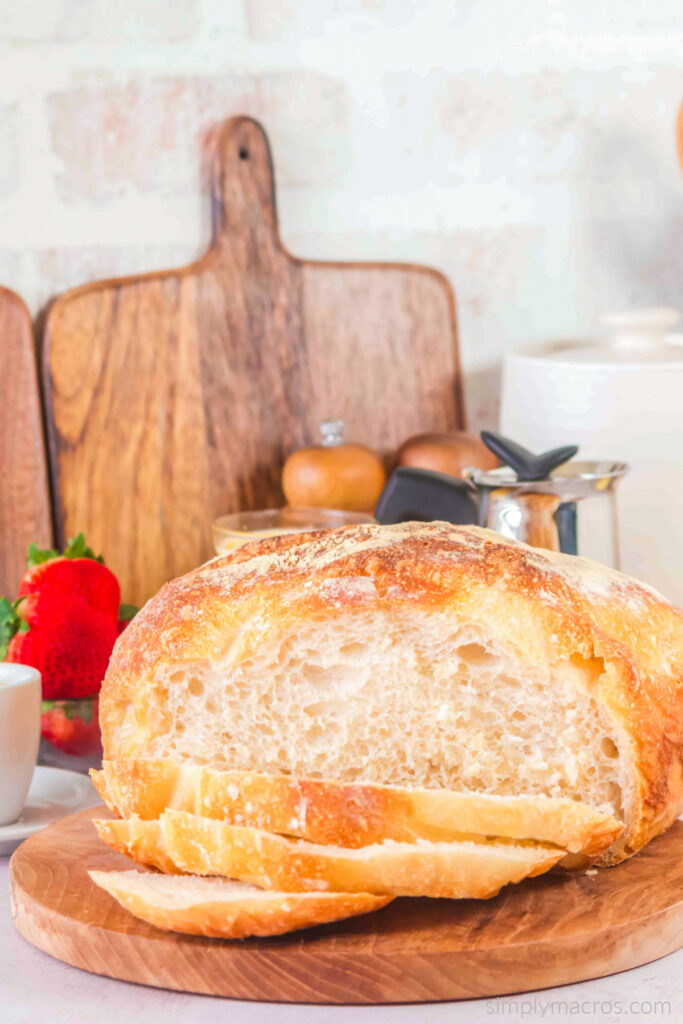
Quick and Easy Sourdough Bread Recipe
Creating sourdough bread is an art that marries simplicity with complexity. This in-depth guide explores the nuances that can turn a basic recipe into a masterful loaf, capturing the heart of traditional baking.
Sourdough bread, known for its characteristic tangy flavor, chewy texture, and crisp crust, is made from a simple mixture of flour, water, salt, and a fermented culture known as a starter. This recipe focuses on leveraging these elements to achieve a perfect loaf.
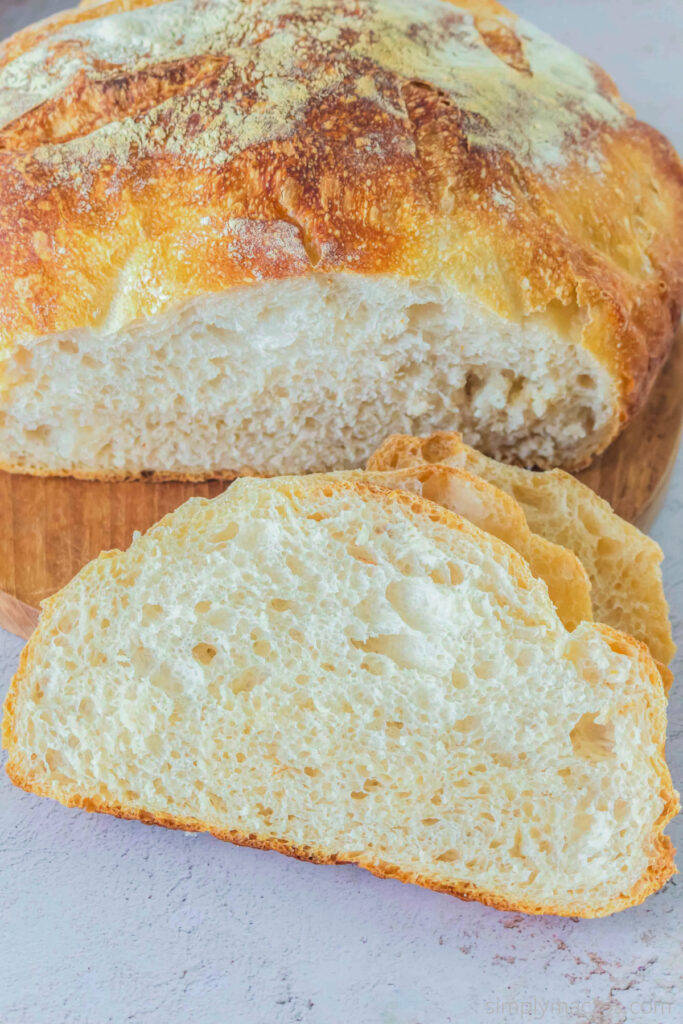
Ingredients for Sourdough Bread Recipe
- Active Sourdough Starter: The backbone of flavor and leavening, a well-maintained starter uses natural yeast and bacteria to ferment the dough.
- Warm Water: Activates the starter; the temperature is crucial as too hot can kill the yeast, while too cold can slow down the rise.
- Unbleached All-Purpose Flour: Provides the gluten structure necessary for the bread to hold its shape and trap gases produced by fermentation.
- Salt: Enhances flavor and tightens the gluten network, which helps control yeast activity during fermentation.
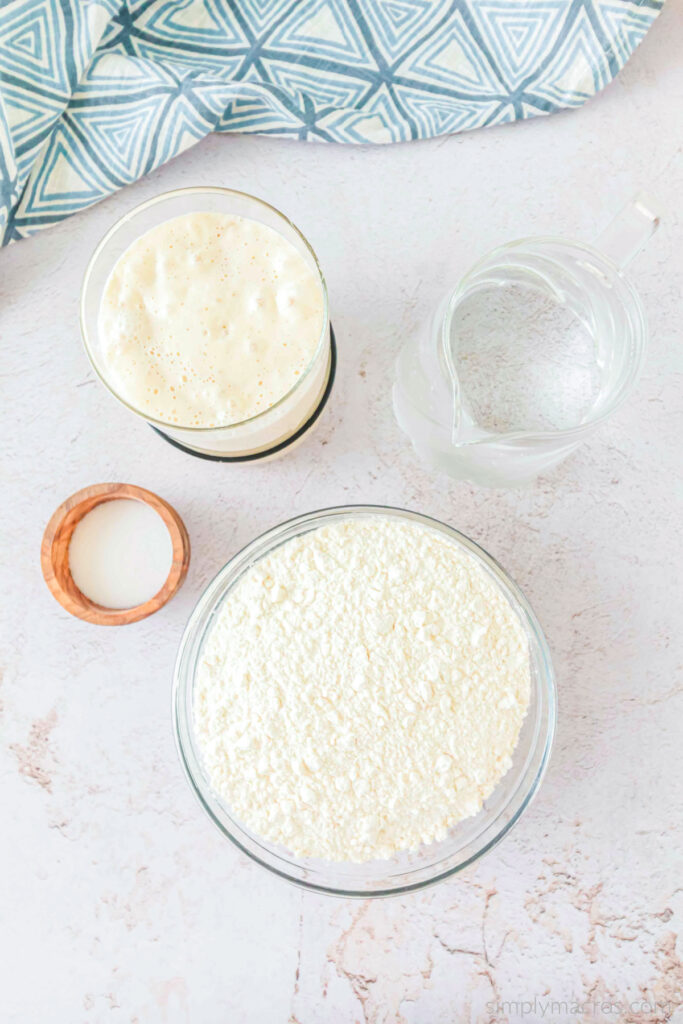
Variations on Classic Sourdough Bread
- Whole Wheat Sourdough: Replace some of the all-purpose flour with whole wheat for a denser, nuttier bread.
- Flavored Sourdough: Incorporate ingredients like olives, dried tomatoes, or herbs for added taste.
How to Make Sourdough Bread
STEP 1: In a large mixing bowl, add the sourdough starter and the water. Mix until you have a milky- mixture. It looks like the starter has dissolved into the water.
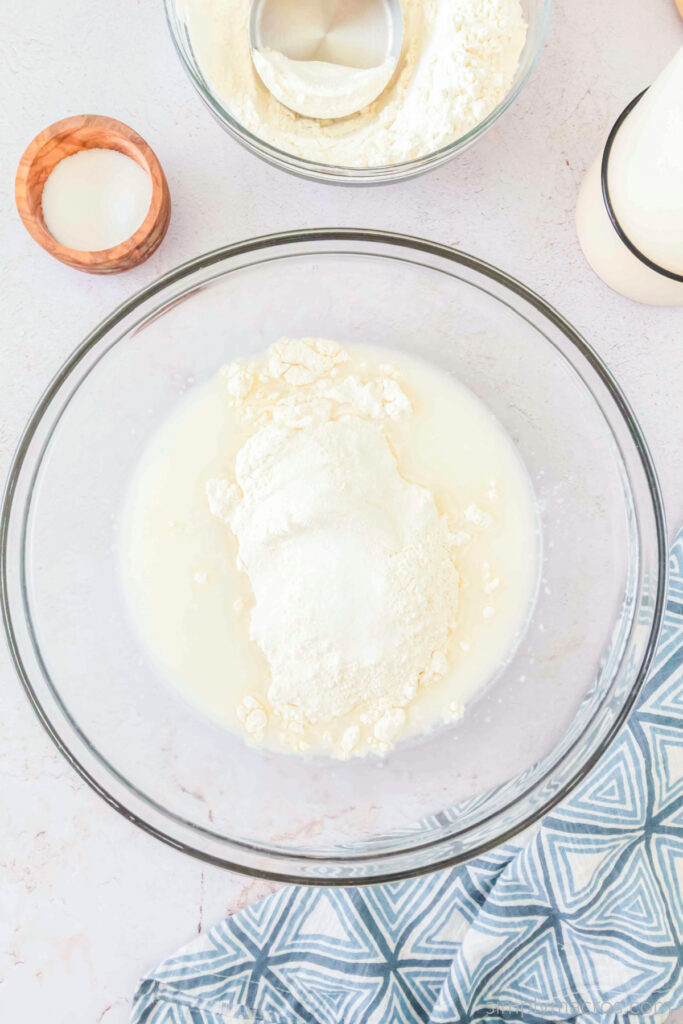
STEP 2: Mix half the flour well using a Danish dough hook or a mixing spoon. Add the salt and the remaining of the flour. Mix well. You can use the whisk or spoon, but at a point, it will be easier to mix with your hand. The dough will be sticky and not held in a ball. Cover with a towel for 30 minutes.
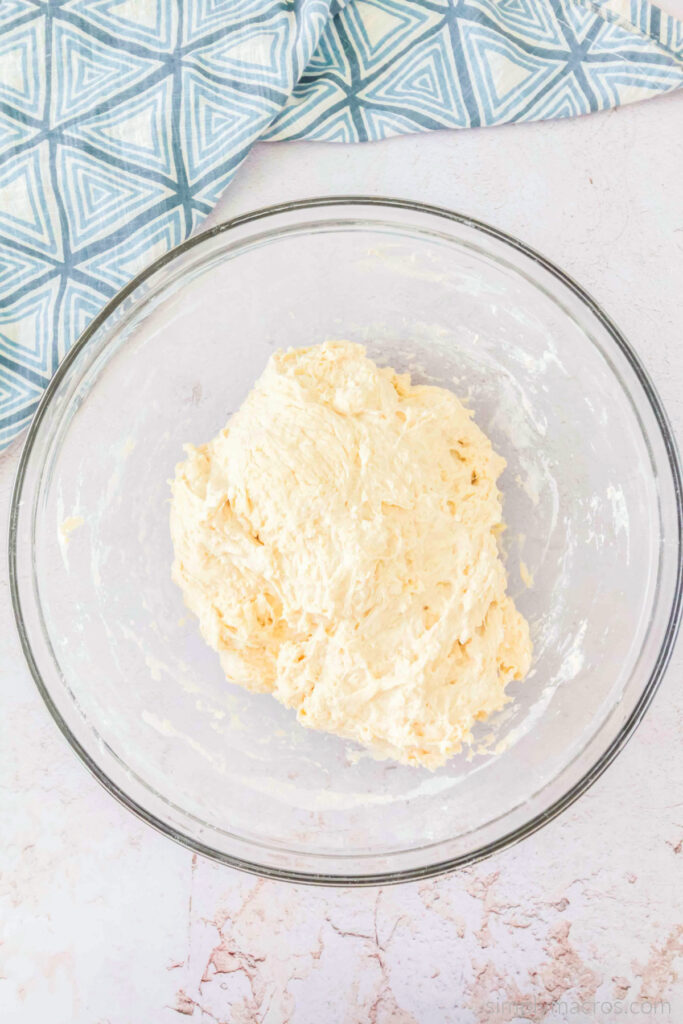
STEP 3: Stretch the dough: After the first 30 minutes, stretch and structure the bread. With one hand, pull on the dough at 12 o’clock and fold it back on itself. Rotate the bowl 90 degrees and repeat. Do this 8 times. Then cover the dough with a towel for 30 minutes for a second rise.
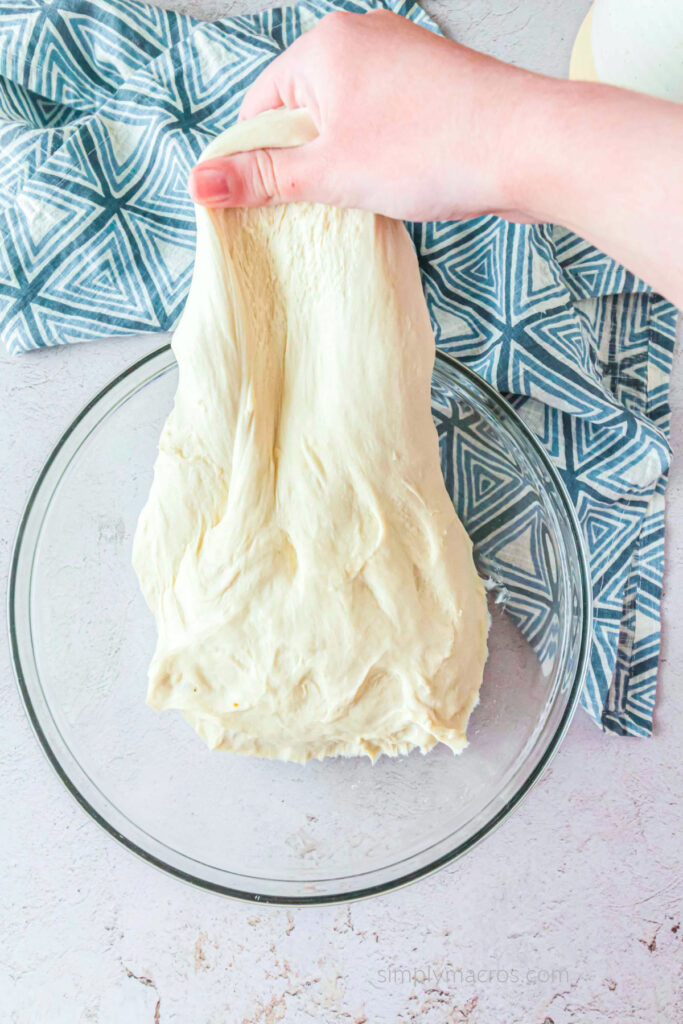
STEP 4: Place the dough on a floured working surface (2-3 tablespoons flour). Stretch the dough, 16 times, like you did in the previous step. Place the dough back in the bowl and cover with a towel for 4-6 hours. Until the dough had doubled.
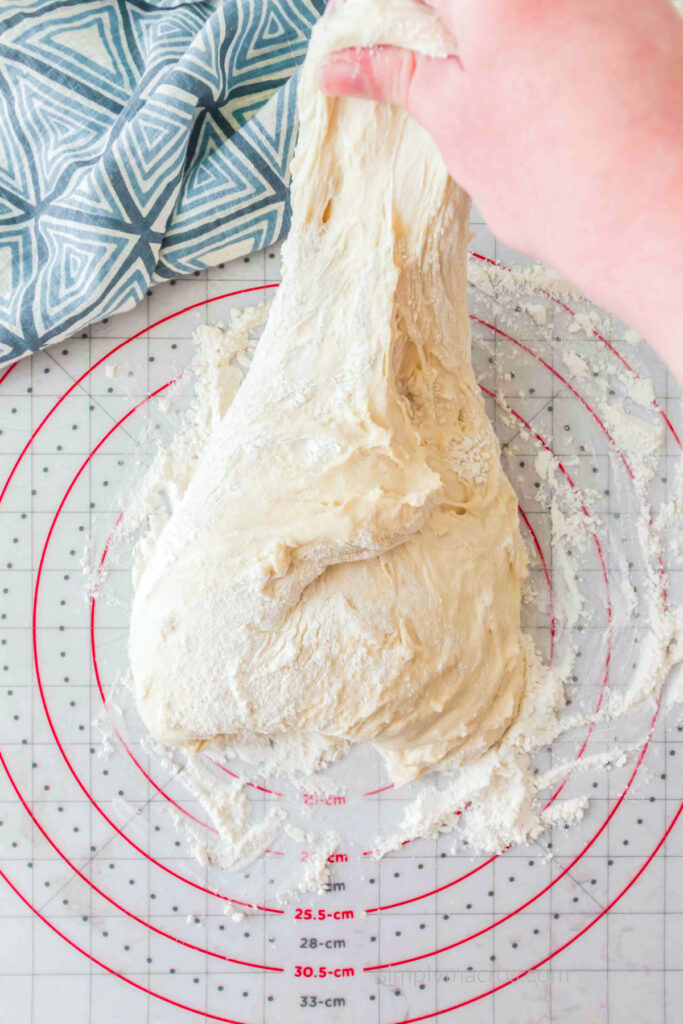
STEP 5: Place the dough on a working surface and use the stretch technique in previous steps about 4 times. Then let the dough rest on the counter for 20-30 minutes.
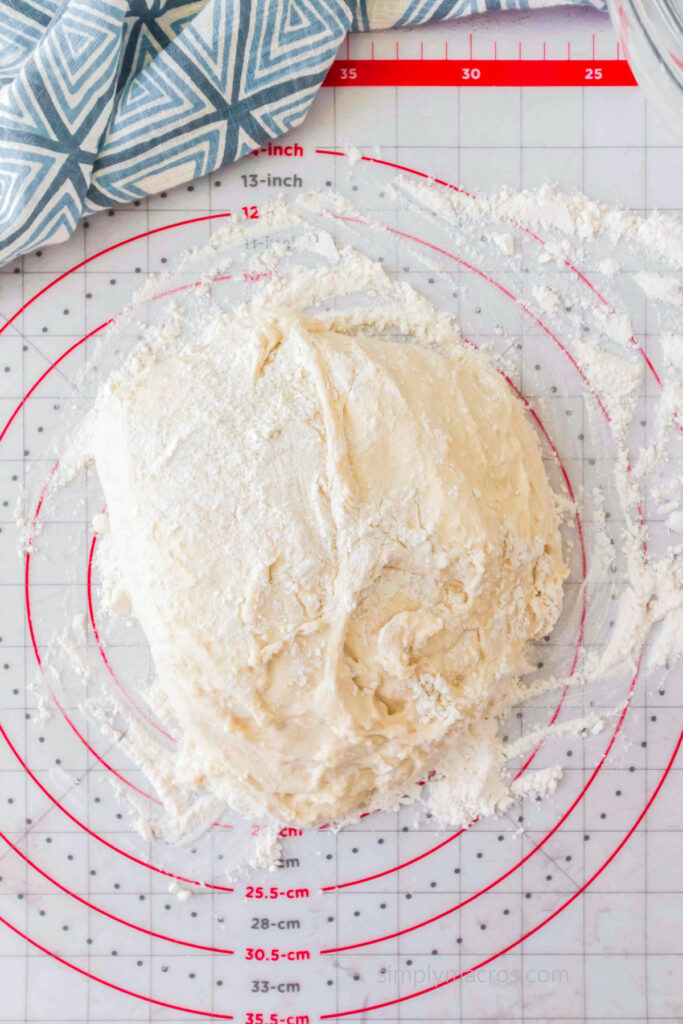
STEP 6: Place a Dutch oven in an oven, and heat the oven to 425 degrees F. Place the dough on a sheet pf parchment paper and score the dough. Once the oven is at temperature, transfer the dough using parchment paper in the Dutch Oven. Bake covered for 20 minutes. Take the cover off and bake for an additional 15-17 minutes. The internal temperature needs to be a minimum of 190 degrees F.
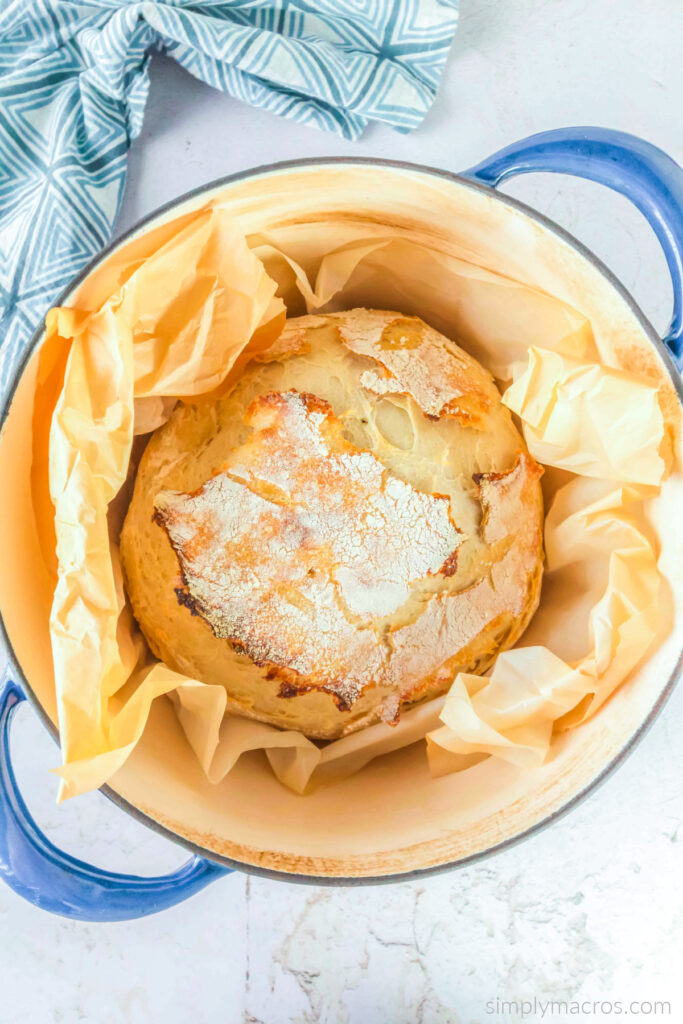
STEP 7: Allow the bread to cool in the Dutch oven for 10 minutes. Carefully transfer the bread to a cooling rack. Cool completely before slicing and serving.
Advanced Tips for Perfect Sourdough Bread
- Maintaining Your Starter: Keep your sourdough starter healthy by regular feedings and using it at its peak activity for the best rise.
- Hydration: Adjust the water content based on your flour’s absorption rate; higher hydration can lead to airier loaves. Do not let the water go higher than 100 degrees F. You don’t want to “kill” the sourdough starter. Remember this will make your bread rise as you don’t use yeast. If you are using a cooler than 95 degrees F, you may delay the rising of the bread.
- Flour: I use unbleached all-purpose flour with the highest protein. For this recipe, I used King Arthur. I have noticed I have better results when using unbleached vs regular all-purpose flour. You can also use bread flour.
- Measuring: Make sure the flour is properly measured. Don’t scoop flour or press it down in the cup. Use a spoon to fill the cup and use the back of a knife to make it even. For even better results, weigh the flour in grams. Read more on how to measure flour the right way.
- Scoring the Dough: Before baking, score the dough to control where the bread expands, preventing unwanted cracks and ensuring a beautiful rise.
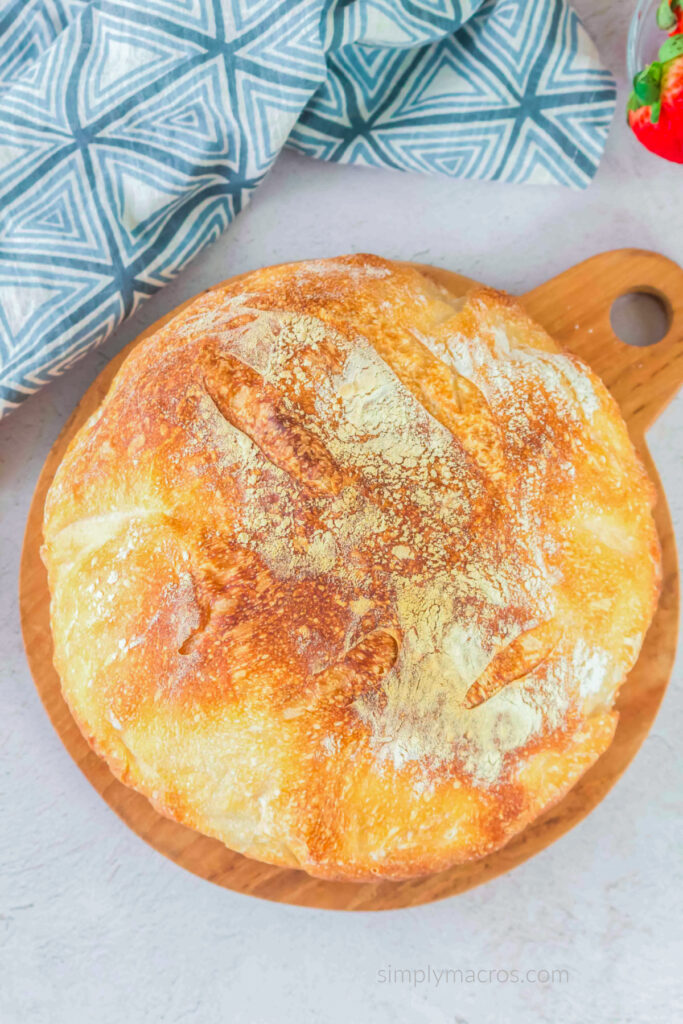
Sourdough Bread FAQs
You can follow an easy recipe like this King Arthur Sourdough Starter, or you can use one from a friend who makes sourdough bread, or even purchase one online. Just make sure you feed the starter as soon as you receive one if purchased.
Yes, you can bake sourdough on a baking stone or steel; use a steam pan underneath to mimic the steamy environment of a Dutch oven.
Increase the fermentation time or adjust the temperature to enhance the sourness.
Focus on gentle handling during shaping and sufficient dough hydration.
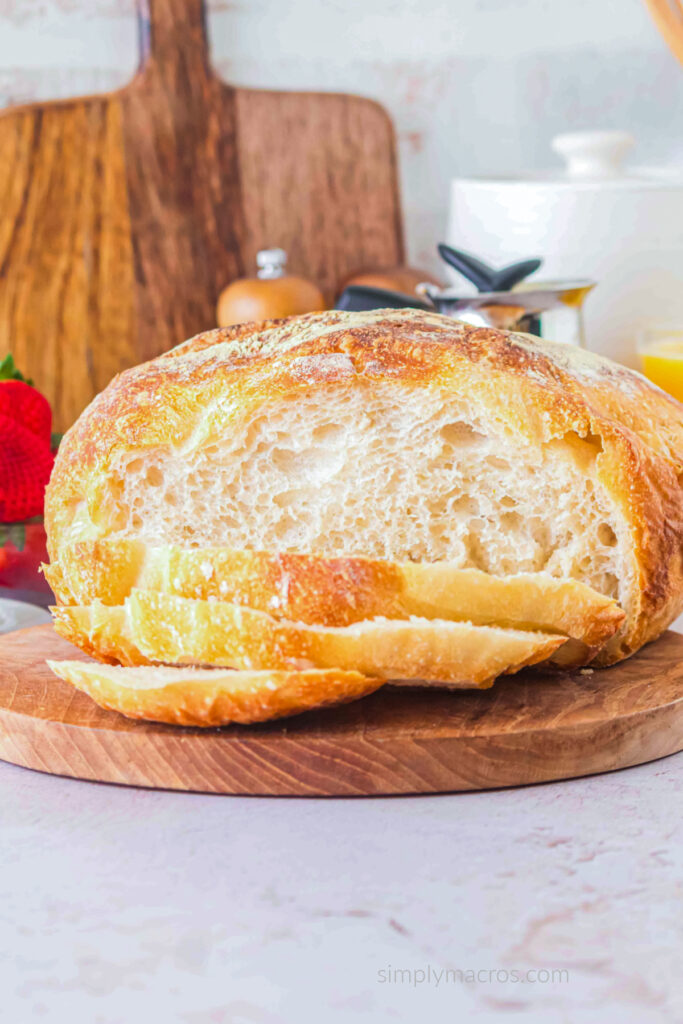
Embracing the process of sourdough baking is not just about following a recipe; it’s about engaging with the dough and understanding its needs based on look, feel, and environment. Every batch is an opportunity and challenge to refine your technique and achieve a loaf that’s not only satisfying to bake but also a joy to eat.
More Dairy Free Recipes:
If you enjoyed this recipe, please consider leaving a STAR ⭐️ RATING in the COMMENTS 📝 SECTION below.
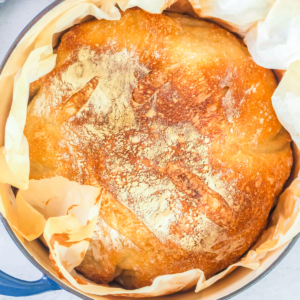
Easy Sourdough Bread Recipe
Ingredients
- 1/2 cup sourdough starter, active
- 540 grams all purpose flour, unbleached
- 1 2/3 cup water, 95-100 F
- 2 teaspoons salt
Instructions
- In a large mixing bowl, add the sourdough starter and the water. Mix until you have a milky- mixture. It looks like the starter has dissolved into the water.
- Mix half the flour well using a Danish dough hook or a mixing spoon. Add the salt and the remaining of the flour. Mix well. You can use the whisk or spoon, but at a point, it will be easier to mix with your hand. The dough will be sticky and not held in a ball. Cover with a towel for 30 minutes.
- Stretch the dough: After the first 30 minutes, stretch and structure the bread. With one hand, pull on the dough at 12 o’clock and fold it back on itself. Rotate the bowl 90 degrees and repeat. Do this 8 times. Then cover the dough with a towel for 30 minutes for a second rise.
- Place the dough on a floured working surface (2-3 tablespoons flour). Stretch the dough, 16 times, like you did in the previous step. Place the dough back in the bowl and cover with a towel for 4-6 hours. Until the dough had doubled.
- Place the dough on a working surface and use the stretch technique in previous steps about 4 times. Then let the dough rest on the counter for 20-30 minutes.
- Place a Dutch oven in an oven, and heat the oven to 425 degrees F. Place the dough on a sheet pf parchment paper and score the dough. Once the oven is at temperature, transfer the dough using parchment paper in the Dutch Oven. Bake covered for 20 minutes. Take the cover off and bake for an additional 15-17 minutes. The internal temperature needs to be a minimum of 190 degrees F.
Notes
Nutrition
Nutrition information is automatically calculated, so should only be used as an approximation.
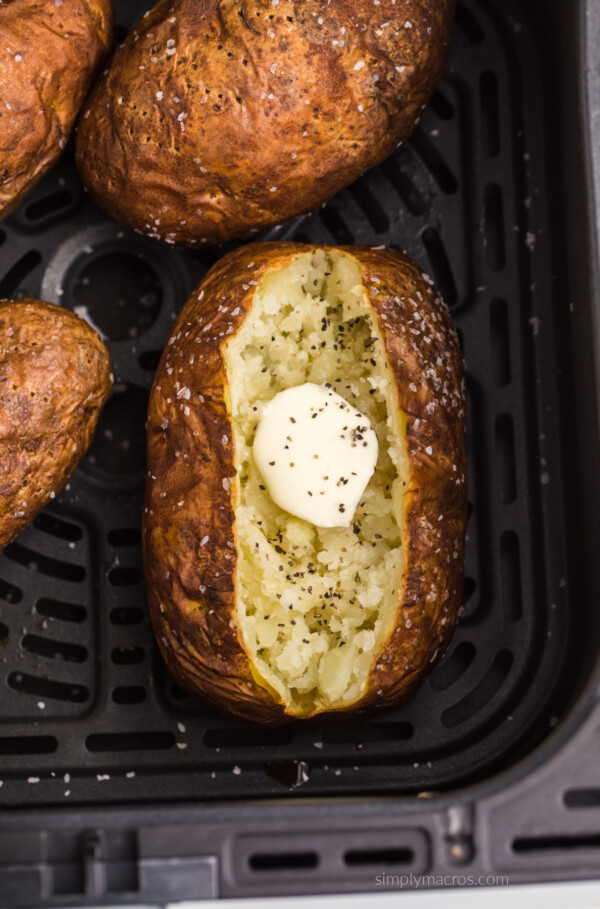
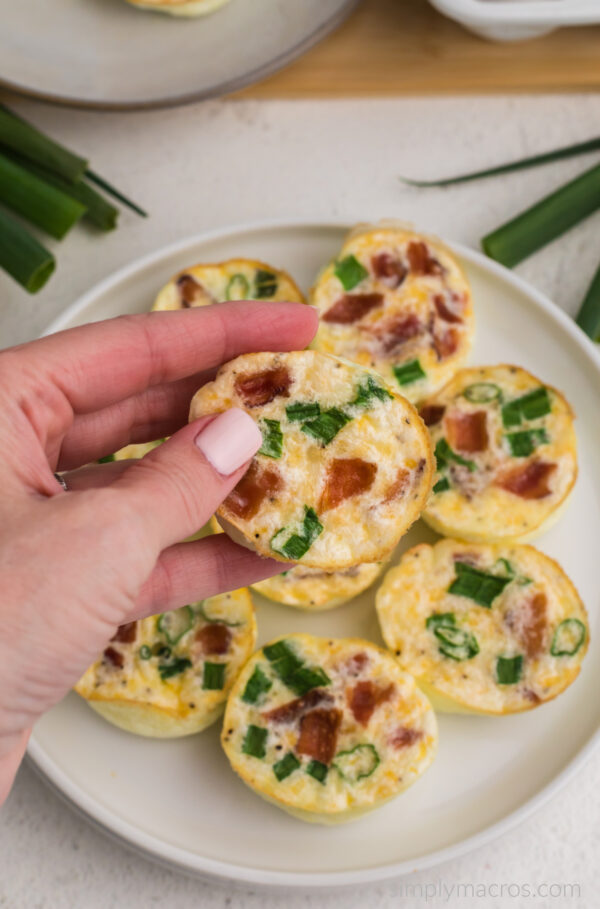
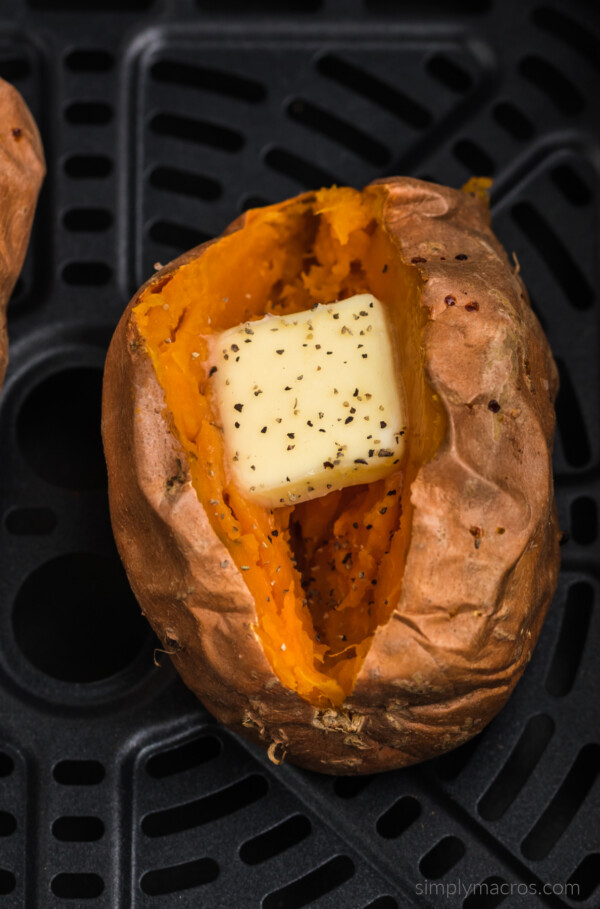














A delicious and easy sourdough bread recipe, perfect for beginners.